Nino 3.4 based index: (5S To 5N; 170W - 120W). Obviously not the best measure because of ongoing global cooling.
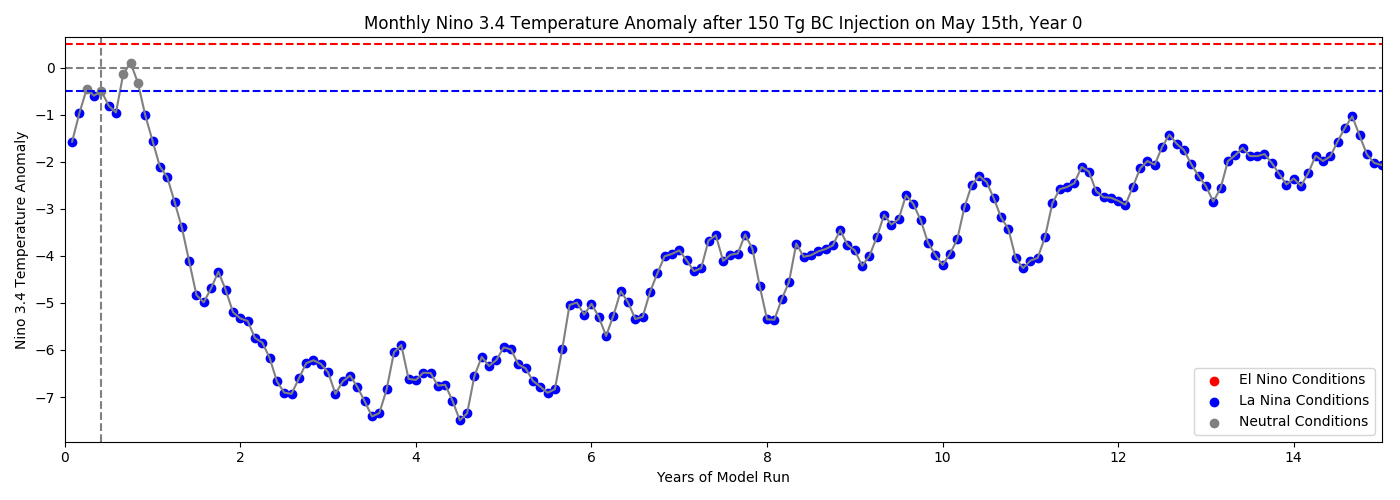
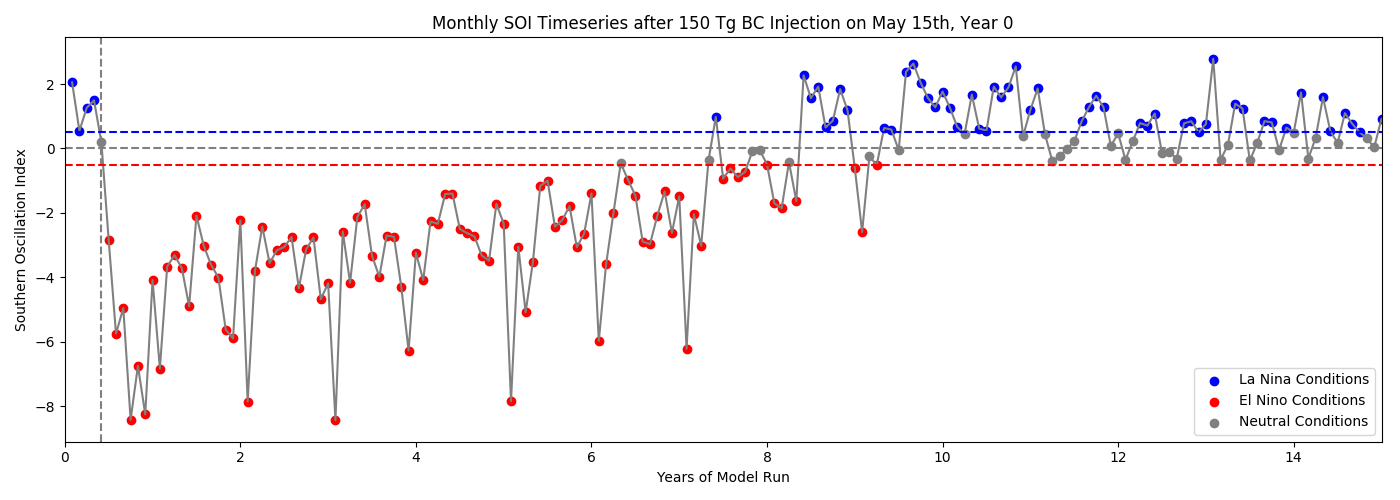
Nino 3.4 based index: (5S To 5N; 170W - 120W). Obviously not the best measure because of ongoing global cooling.

Normalized by global mean surface temperature, which is an attempt to filter out global cooling signal:
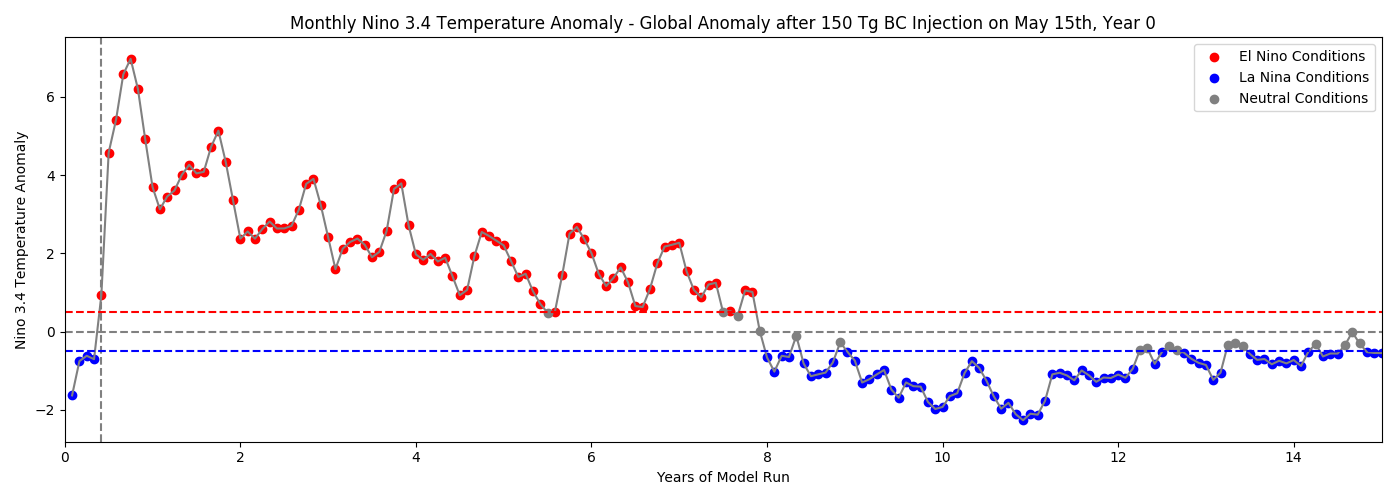
Normalized by 20S-20N SSTA, following paper on African Kelvin waves being responsible for El Nino following volcanic eruption :
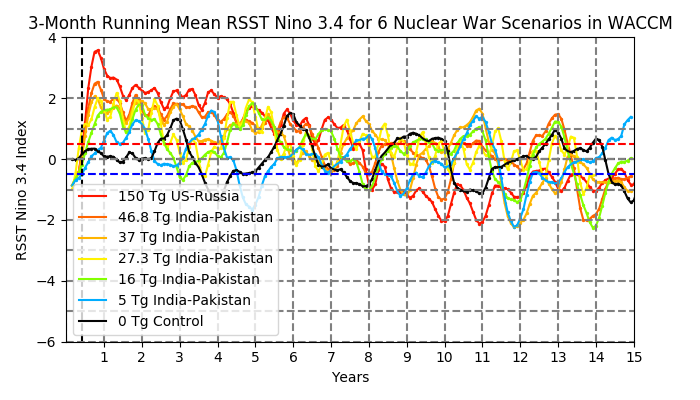
Quantifying El Nino during the control run:
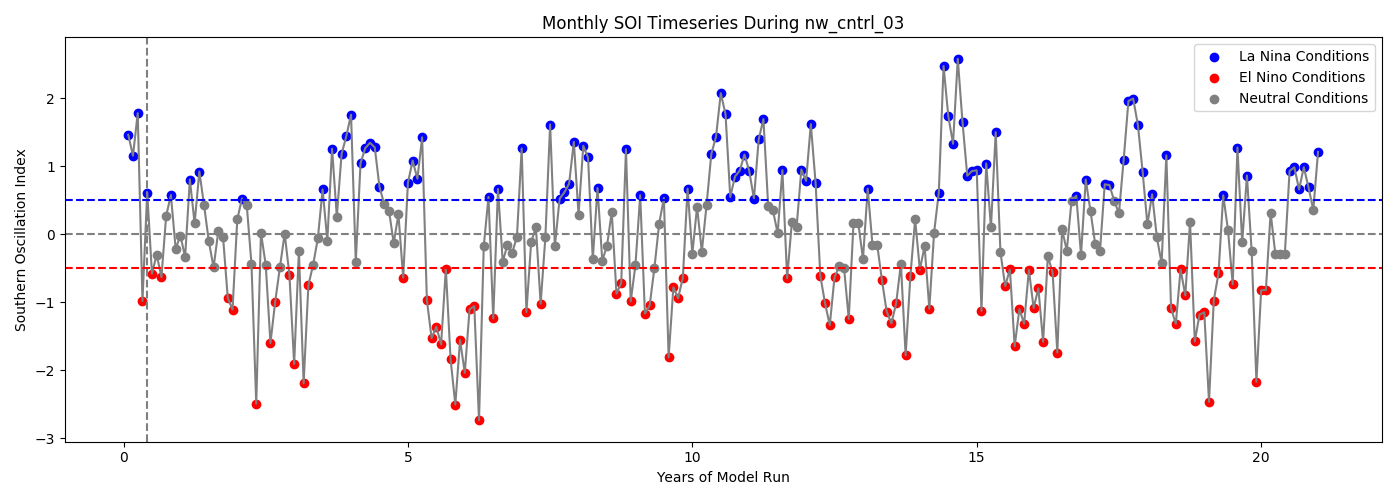
Impact of El Nino and AO on Winter Warming
Interested in determining the temperature impact of El Nino conditions in the first winter after a 150 Tg soot injection. I isolated all winter months with a SOI < -1.0, an AO > 1.0, and all winter months with both of these conditions.
All winter months with an SOI < - 1.0 (El Nino conditions):

Cooling on the order of 1C is observed across parts of the Arctic during a composite of 13 winter months with strong El Nino conditions.
All winter months with an AO > 1.0:
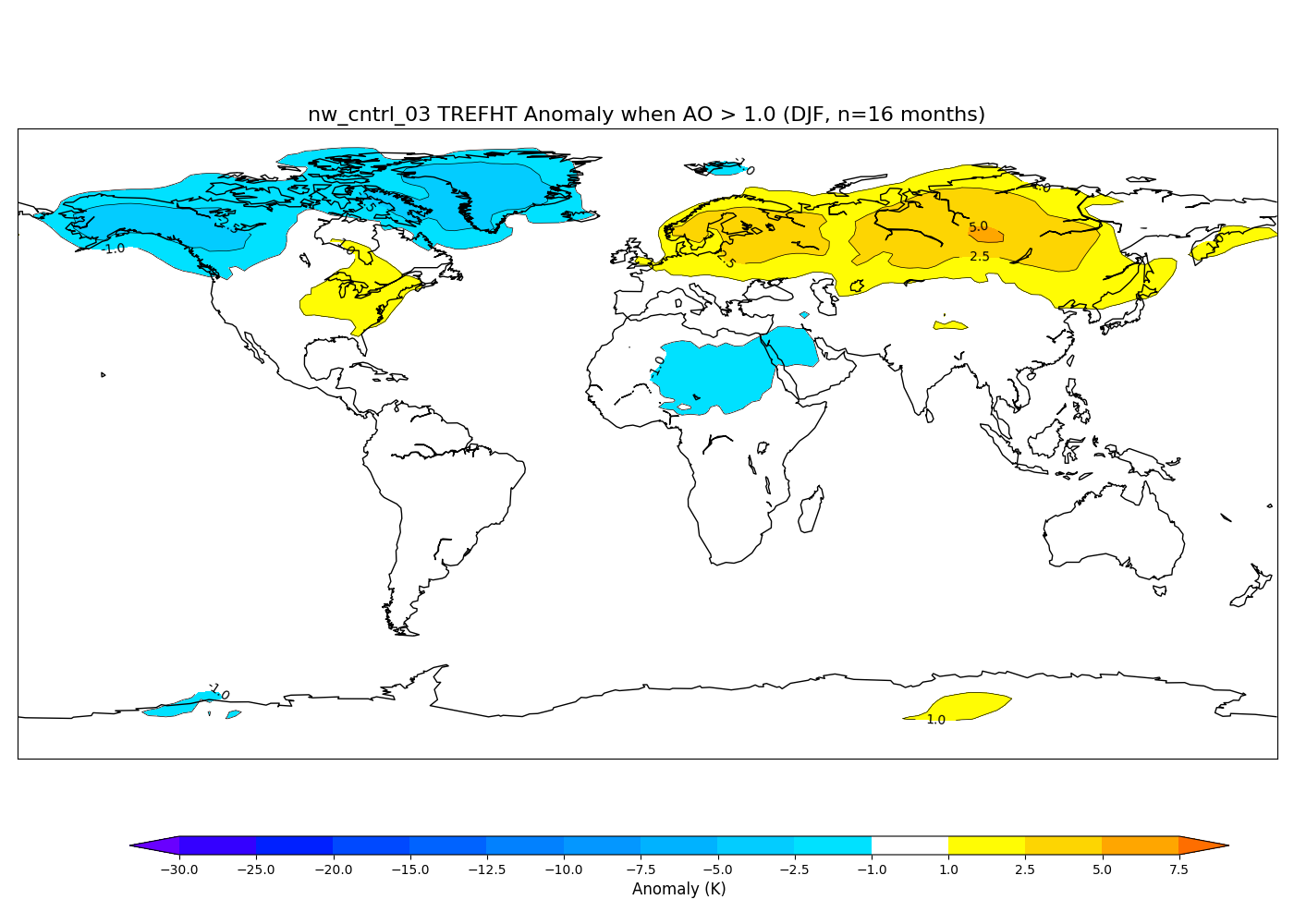
All winter months with an AO > 1.0 AND SOI < -1.0:
There are only two winter months during the nw_cntrl_03 control run that exhibit the same SOI and AO conditions as following a 150 Tg soot injection.
Month 084: AO of 0.916 and SOI of -6.221
Month 180: AO of 2.442 and SOI of -1.257
Remarkably, this looks very similar to the actual first DJF following a 150 Tg soot injection. The very strong +2.442 AO is what is mostly driving this temperature pattern, confirming my hypothesis that a very strong +AO would shift the typical warming experienced during a +AO northward. ENSO plays a mostly negligible role in driving polar temperatures during strong +AO winters.
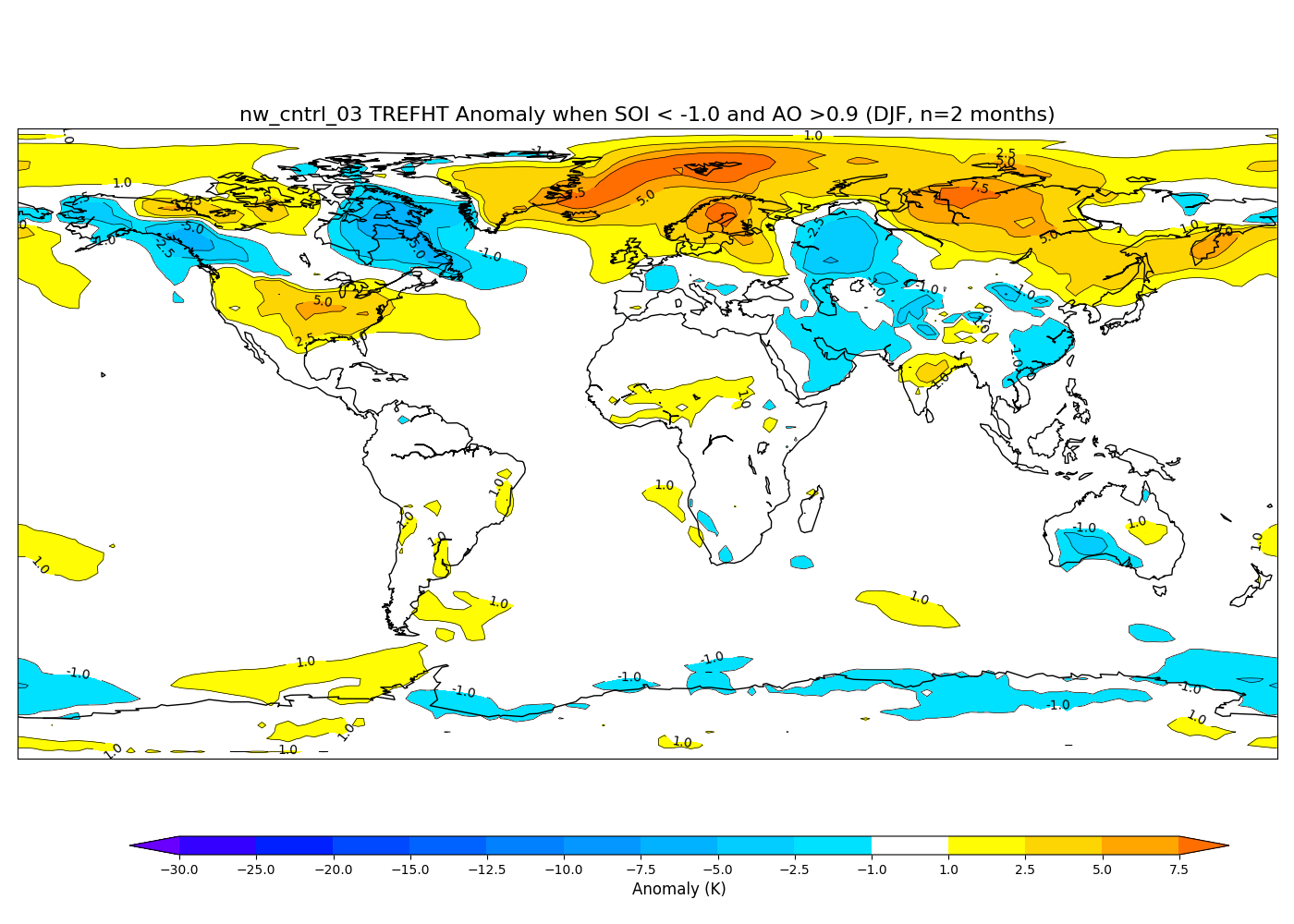
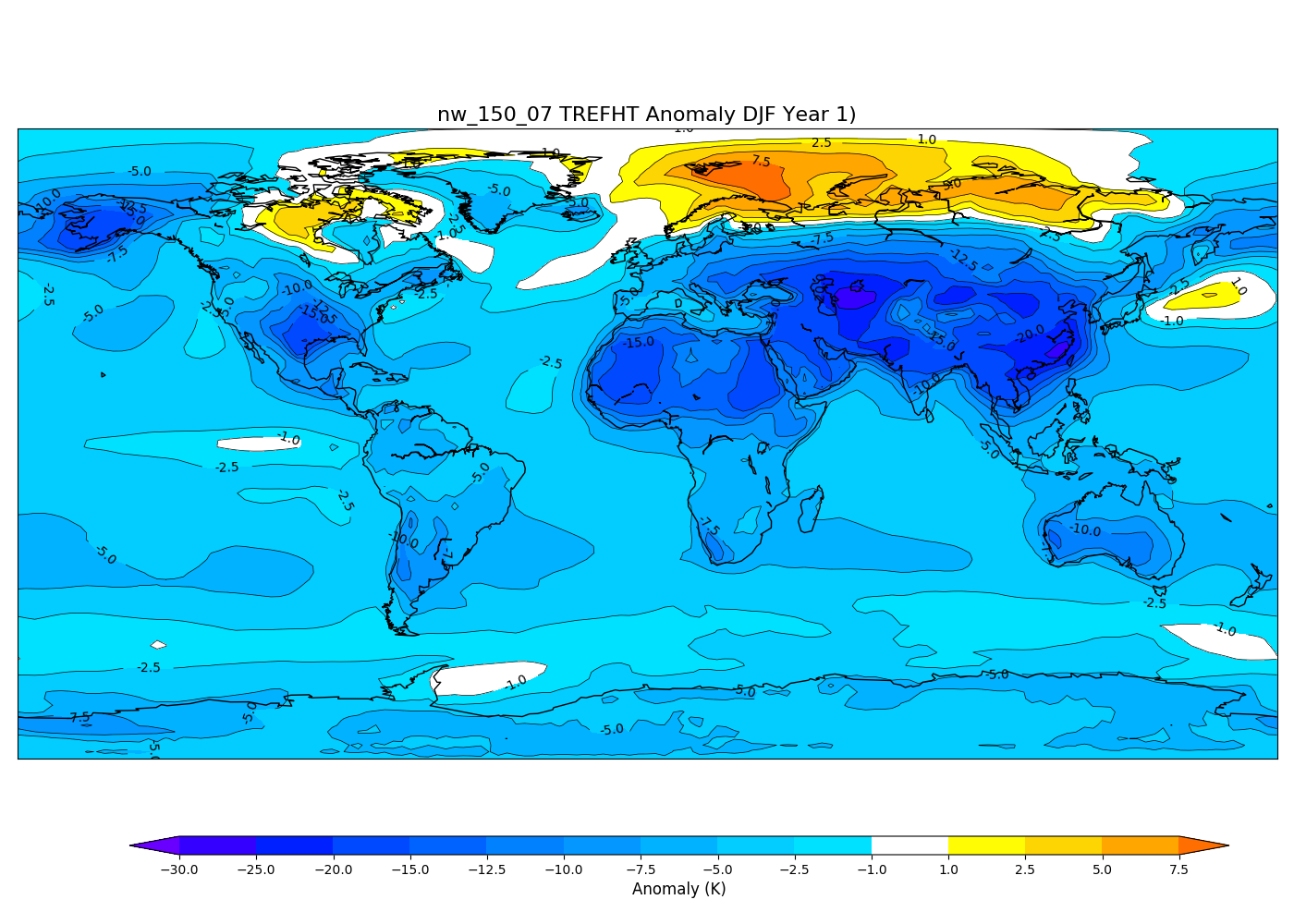
=================================================================================
!! plot dump !!
=================================================================================
150 Tg nw_150_07 analysis of sea ice changes: el Nino
